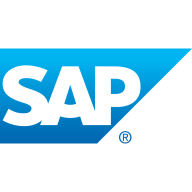

SAP ERP and Microsoft Dynamics AX are both prominent players in the ERP software market for enterprises. SAP ERP stands out for its industry-specific customization and robust integration, while Microsoft Dynamics AX is preferred for its user-friendly interface and seamless integration with Microsoft products.
Features: SAP ERP offers comprehensive functionalities for finance, inventory, and production, aimed at mid to large-scale operations, with strong integration and industry-specific customization. Microsoft Dynamics AX is appreciated for its ease of use, straightforward navigation, and integration with other Microsoft products, which makes it adaptable for various business processes.
Room for Improvement: SAP ERP is often criticized for its high costs and complex user interface, with users experiencing challenges regarding technical support and update complexities. Microsoft Dynamics AX needs enhancements in integration, user interface, and system performance, and also faces issues with the availability of an Arabic interface and high customization costs.
Ease of Deployment and Customer Service: SAP ERP supports on-premises and hybrid deployment models, receiving mixed feedback on technical support responsiveness. Microsoft Dynamics AX offers flexible deployment options, including public and hybrid clouds, and is praised for customer service, though technical support speed and resolution could improve.
Pricing and ROI: SAP ERP is considered a premium product with substantial licensing and maintenance costs, justified by long-term ROI through improved efficiency and automation. Microsoft Dynamics AX also demands a significant investment, yet offers better economic options through cloud services like Business Central, potentially enhancing ROI despite initial cost barriers.
SAP ERP did provide value for money.
Microsoft has really good documentation, and they are known for that.
SAP technical support is very good.
It was very quick, and we didn't have many tickets, but every time any issues arose, they were very quickly resolved.
It is not easy to justify something as high priority unless the system is completely down.
There are these things called AOS nodes where if you have more users and performance decreases, you can add more servers to the cluster.
It struggles with scalability when you need to manage financial reporting or setup for multiple companies.
Microsoft Dynamics AX already has multiple functions for sales, inventory, HR, finance, and supply chain.
It is scalable when moving from one version to another or adding additional components like warehouse management.
The scalability of SAP ERP is excellent.
I have not had any major issues with stability.
If you do the maintenance and have your own people, it could be stable, but it means a lot of work.
Production processes would be on hold without stability, so it is quite important that the software is very stable.
Stability-wise, SAP ERP is the best product among others.
It is no longer supported from a security perspective, so it is not getting updated.
Microsoft Dynamics AX lacks the concept of month-end closing, which is essential for tight control over financial periods.
Most companies working with AX currently transforming to D365, upgrading their ERP systems, which are more enhanced and have additional features such as dashboards.
SAP ERP could improve by integrating additional components such as digital signatures and barcoding.
SAP recently implemented Databricks, and they started investing significantly in the analytic environment.
We are using version 6.0 and it meets our needs.
Acquiring a developer license for customization is expensive, costing over one hundred thousand Hong Kong dollars.
Small and medium companies can struggle with the pricing.
The pricing for SAP ERP is medium but slightly on the higher side.
There are many levels of security and permissions for each user to monitor and access specific data relative to their functions.
I have not had any major issue with stability.
The most valuable feature of Microsoft Dynamics AX is its full integration with Excel, allowing for cut and paste functionality between Excel and the system.
The consistent integrations and real-time data analytics in SAP ERP significantly enhance the decision-making process by facilitating follow-ups and action points.
SAP ERP has impacted our organization positively because it is highly customizable to build any process we have in our companies and to write programs.
SAP ERP is particularly strong in manufacturing, from production planning to plant maintenance, then Material Management itself, and managing warehouse management and inventory control.
| Product | Market Share (%) |
|---|---|
| SAP ERP | 15.3% |
| Microsoft Dynamics AX | 4.7% |
| Other | 80.0% |


| Company Size | Count |
|---|---|
| Small Business | 29 |
| Midsize Enterprise | 13 |
| Large Enterprise | 17 |
| Company Size | Count |
|---|---|
| Small Business | 31 |
| Midsize Enterprise | 30 |
| Large Enterprise | 76 |
Microsoft Dynamics AX is an enterprise resource planning (ERP) solution designed to support the business processes of organizations in a wide range of industries, including manufacturing, retail, and professional services. The solution offers a comprehensive set of tools and features to support financial management, supply chain management, human resources management, and project management, among others.
With Dynamics AX, organizations can manage their financial operations, including general ledger, accounts payable, accounts receivable, and cash management. It also offers tools for managing the supply chain, including inventory management, purchase order management, and sales order management. Dynamics AX also supports human resources management, including employee self-service, benefits administration, and payroll. Overall, it is a flexible and scalable platform for organizations of all sizes.
Microsoft Dynamics AX Features
Microsoft Dynamics AX has many valuable key features. Some of the most useful ones include:
Microsoft Dynamics AX Benefits
There are many benefits to implementing Microsoft Dynamics AX. Some of the biggest advantages the solution offers include:
Reviews from Real Users
Microsoft Dynamics AX is a solution that stands out when compared to many of its competitors. Some of its major advantages are its UI functionality, flexibility, and cost-effectiveness.
"The most valuable feature I've found is the UI functionality,” says Navnath B., Head IT and CIO at Mutual Automotive Pvt Ltd.
Another PeerSpot reviewer, Timpa A., IT Manager at an energy/utilities company says he like the solution because "It is flexible and cost-effective."
Shahzad I., ERP Project Manager & Managing Consultant at Liwa Education, Iranfava, explains, “It's good for retail businesses. It expands a lot and constantly brings on new features. It's got a lot of competitive features.”
We monitor all ERP reviews to prevent fraudulent reviews and keep review quality high. We do not post reviews by company employees or direct competitors. We validate each review for authenticity via cross-reference with LinkedIn, and personal follow-up with the reviewer when necessary.